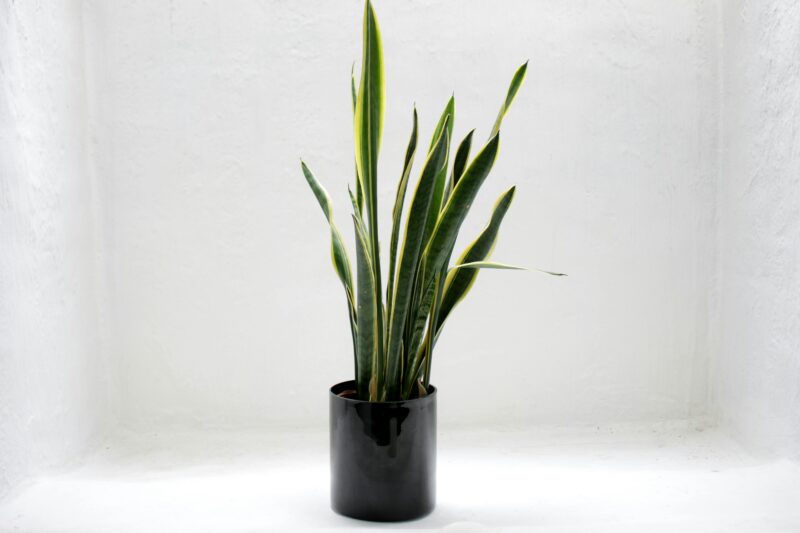
When Is the Best Time to Move Your Snake Plant Outside?
Spring is your window of opportunity to introduce snake plants to the outdoors. Once the temperatures consistently stay above 50°F, you can safely place them outside. Snake plants are surprisingly hardy and can handle temperatures up to 100°F during the summer. However, if you’re expecting a dip below 50°F or extremes in weather, bring them back indoors to prevent damage.
Pro Tip:
If you live in a region with unpredictable spring weather, keep an eye on nighttime temperatures and gradually introduce the plant to outdoor conditions over a week or two.

Finding the Sweet Spot for Light Exposure
Snake plants are versatile when it comes to light requirements. Whether your outdoor space boasts blinding full sun, filtered shade, or even semi-dark spots, snake plants can adapt. But they do prefer bright, indirect sunlight for optimal growth.
If you're introducing a snake plant to its new outdoor home, don't shock it with sudden, intense sunlight, as this can scorch the foliage. Gradually move it from a shaded spot to brighter light over a week to acclimate it properly.
Light Placement Quick Guide:
| Light Condition | Ideal Placement | Risk |
|---|---|---|
| Full Sun | Patios and south-facing walls | Potential leaf burn |
| Partial Sun | Porches, under pergolas | Safe and balanced growth |
| Light Shade | Under trees or awnings | Slower growth |

Caring for Your Snake Plant Outdoors
While snake plants are famously low-maintenance indoors, outdoor placement introduces new variables like changing weather and higher exposure to pests. Adjust your care routine to fit the plant’s new environment.
Watering Needs
Outdoor snake plants usually require more frequent watering since soil dries out faster due to heat and wind. Check the soil regularly and water only when it feels completely dry. Remember, these desert natives prefer a “less is more” approach to water, and soggy soil will quickly lead to root rot.
Protection from the Elements
Storms, heavy rainfall, or strong winds can damage your plant. Place potted snake plants in protected areas, such as under awnings or beside walls, to shield them from harsh weather.
Pest Management
Outdoor conditions make snake plants vulnerable to insects like mealybugs or aphids. Before bringing your plant back inside, inspect the leaves and soil for any signs of pests. Wipe the foliage clean, and you’ll avoid inviting unwanted critters into your home.

Creating Stunning Outdoor Displays with Snake Plants
Snake plants aren’t just resilient—they’re showstoppers. Their sculptural leaves and bold patterns add instant style to outdoor spaces. Here’s how to incorporate them into your garden or patio design:
- Thrillers in Planters: Use tall varieties like “Black Gold” or “Laurentii” as the centerpiece in container arrangements. Pair them with trailing plants like petunias and calibrachoa for an eye-catching display.
- Color Coordination: Choose pots with bold colors that contrast with the plant’s deep greens and pale yellows. This adds a fun, modern vibe to your outdoor decor.
- Tropical Vibes: Snake plants, with their upright, architectural leaves, work beautifully alongside other tropical plants like dracaena or ferns for a lush, resort-style look.
Popular Snake Plant Varieties for Outdoors
- Gold Hahnii: Compact and excellent for smaller planters or table displays.
- Black Coral: With its dark green, almost black foliage, it makes a dramatic statement.
- Twisted Sister: A vibrant choice with yellow-green twisted leaves—perfect for quirky outdoor setups.
Transitioning Back Inside
Come fall, it’s time to bring your plant indoors before temperatures drop below 50°F. The transition can be tricky, so reverse the acclimation process: move your snake plant to a shaded outdoor spot for a week before bringing it inside. This gradual shift helps minimize shock from the drastic light and temperature change.
Don’t forget to inspect and clean your plant’s leaves and soil. Removing any pests or debris ensures a smooth reentry to your home.








